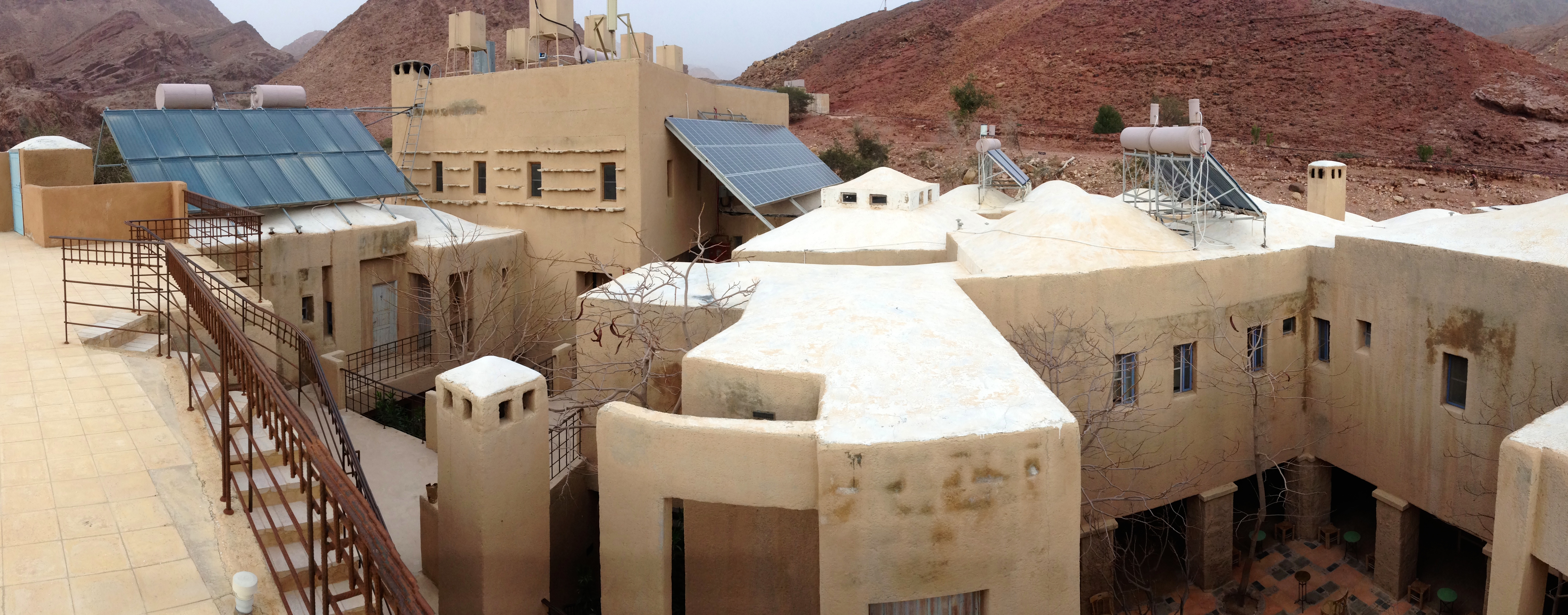
Environmental & Science Education
STEM
Engineering
Culture
Society
Sustainability
Edward Hessler
Among the buildings Jordanian architect Ammar Khammash has designed is the Royal Academy for Nature Conservation for Jordan's Royal Society for the Conservation of Nature (RSCN). It was opened in 2015 and serves as a training facility for the management of protected areas, including conservation research, ecotourism and development.
Khammash is known for designs that are sensitive to the environment which includes extensive use of local materials and site features. The designs are an expression of what the site provides and allows.
There is a feature article on Khammash's design for the Royal Academy for Nature Conservation in Aramco World for July/August 2018. It is also beautifully photographed. These are some quotes by Khammash from that article that provide perspectives on how his thinking about the design.
--I kept passing a quarry just outside the reserve boundary (Ajloun Forest Reserve). Why should we cut another wound in nature when we already have this cut? Let's fix this and celebrate it as a human intervention.
--Whoever was driving the last bulldozer in the last week this quarry was operating--back in the early '90s--never knew that he was designing the front elevation of my building for me. He left a cliff, and I followed it. This building is designed by chance.
--The site includes a bridge. I was interested in Khammash's comments on its engineering design. This bridge has almost no foundation. Its lateral thrust is like when you take a cane and bend it across a corridor: It can't go anywhere, so the more load it takes the more it pushes into the quarry sides.
--My dream is to teach a course of architecture for blind architects, to force architects only to use the ear, not the eye. Architecture has been hijacked by the visual. What about the sound of the building, the smell of the building, the idea of earthing, experience architecture through our feet."
--Khammash dampened acoustic reverberation in the conference hall by using cinder blocks, laid sideways with the openings facing the inside of the room. "This is a nice, interesting way of using these blocks. Sound stays in the holes. You don't need a microphone for a speaker to be heard clearly at the back of he hall.
--Architecture is problem-solving. This is the spark for me, and every time I design, that's in my subconscious: Can we solve the problem without the building? If I can, I will. The site is the architect, and I listen. Ultimately, I'm just a draftsman, a technician under the site's command.
Matthew Teller is the author of the essay from which these quotes are taken. Its title, "Listening to the Land," encapsulates Khammash's architectural philosophy and practice. The photographs are by George Azar. The essay may be found here.
And here are a few more photographs of the building from Khammash Architects. Teller discusses the angled passageway shown in three of the images and the inspiration for it. It is a remarkable feature of the building.

 CGEE Student Voice
CGEE Student Voice
No comments:
Post a Comment